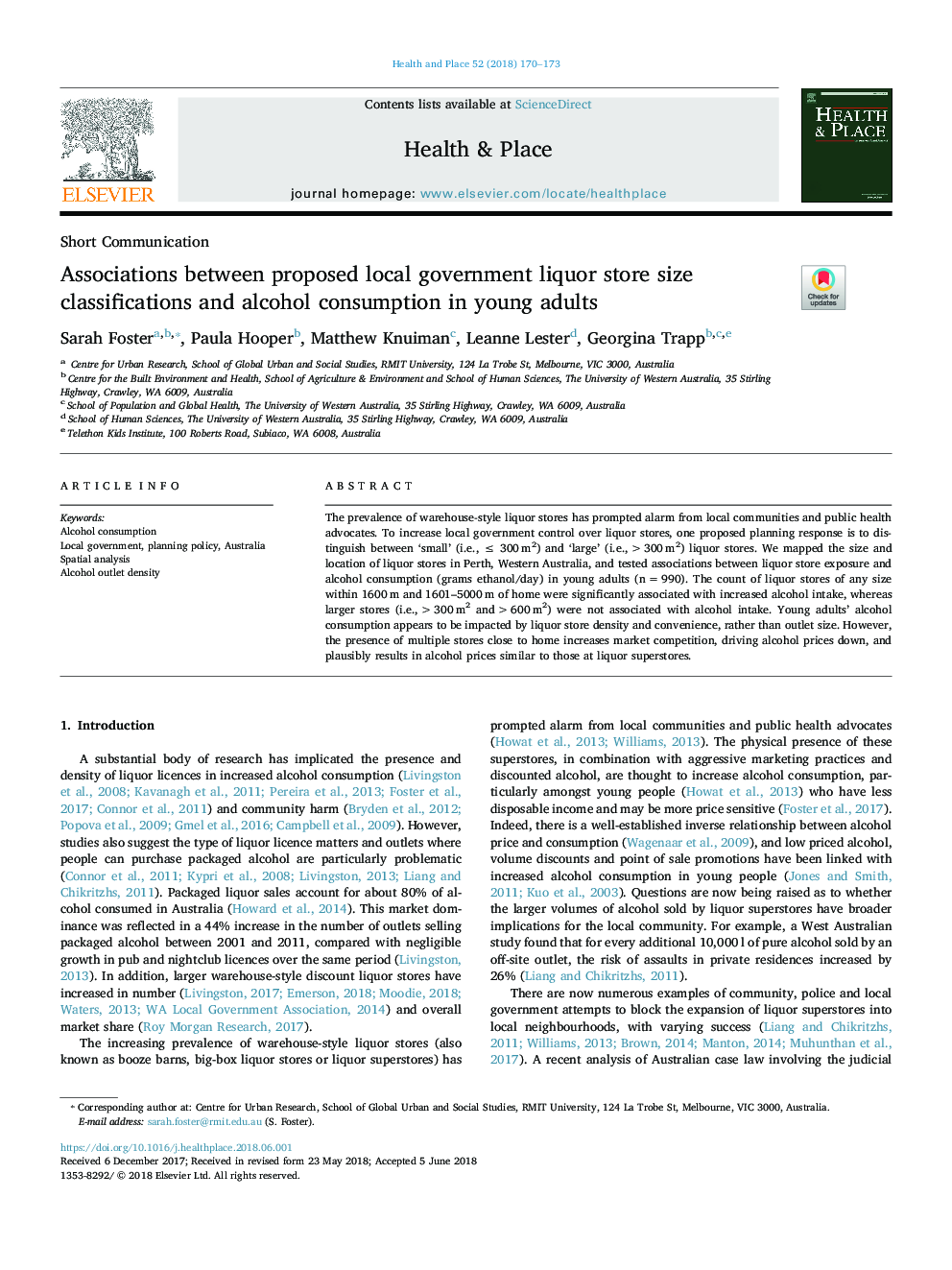| Article ID | Journal | Published Year | Pages | File Type |
|---|---|---|---|---|
| 7456817 | Health & Place | 2018 | 4 Pages |
Abstract
The prevalence of warehouse-style liquor stores has prompted alarm from local communities and public health advocates. To increase local government control over liquor stores, one proposed planning response is to distinguish between 'small' (i.e., ⤠300â¯m2) and 'large' (i.e., > 300â¯m2) liquor stores. We mapped the size and location of liquor stores in Perth, Western Australia, and tested associations between liquor store exposure and alcohol consumption (grams ethanol/day) in young adults (nâ¯=â¯990). The count of liquor stores of any size within 1600â¯m and 1601-5000â¯m of home were significantly associated with increased alcohol intake, whereas larger stores (i.e., > 300â¯m2 and > 600â¯m2) were not associated with alcohol intake. Young adults' alcohol consumption appears to be impacted by liquor store density and convenience, rather than outlet size. However, the presence of multiple stores close to home increases market competition, driving alcohol prices down, and plausibly results in alcohol prices similar to those at liquor superstores.
Related Topics
Health Sciences
Medicine and Dentistry
Public Health and Health Policy
Authors
Sarah Foster, Paula Hooper, Matthew Knuiman, Leanne Lester, Georgina Trapp,
